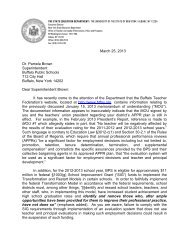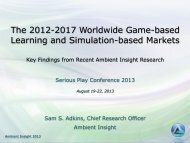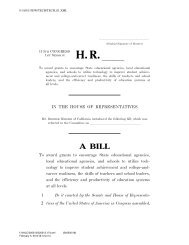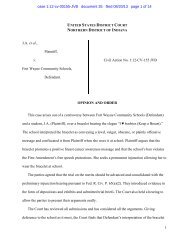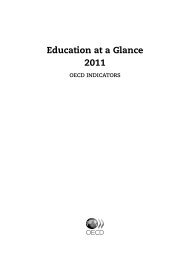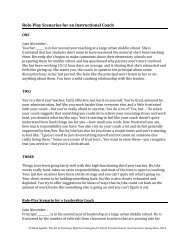Testing More, Teaching Less - American Federation of Teachers
Testing More, Teaching Less - American Federation of Teachers
Testing More, Teaching Less - American Federation of Teachers
- No tags were found...
Create successful ePaper yourself
Turn your PDF publications into a flip-book with our unique Google optimized e-Paper software.
Executive SummaryOBJECTIVESStudents are engaged in various types <strong>of</strong> testingeach year. The purpose and quality <strong>of</strong> such testing,the time spent taking and administering tests andthe usefulness <strong>of</strong> the results are ongoing topics <strong>of</strong>discussion among students, parents, educators andpolicymakers. Advocates for more testing implicitlyassume that more testing improves student achievementand that the benefits <strong>of</strong> more testing outweighthe additional costs, which they typically view onlyas the money paid to testing companies. Opponents<strong>of</strong> excessive testing claim that schools have sacrificedlearning time in favor <strong>of</strong> testing and test preparation,reduced learning time for non-test subjects,and focused time and attention on the “bubble kids”(students whose scores are clustered right below thepr<strong>of</strong>iciency cut score) at the expense <strong>of</strong> developingevery student’s full potential.To get a complete picture <strong>of</strong> the resources nowdevoted to testing in the United States, our studydocuments the types <strong>of</strong> assessments, the number<strong>of</strong> assessments and the number <strong>of</strong> times each testis administered annually, as well as the associatedtest-taking time and the direct budgetary cost <strong>of</strong>such tests. Our analysis encourages policymakers tojudge the benefits <strong>of</strong> current testing policy relative tobudgetary costs and alternative uses <strong>of</strong> student andteacher time, such as more instruction and more attentionto non-test subjects.Although more comprehensive than most otherstudies <strong>of</strong> the cost <strong>of</strong> testing, our study excludesmany testing costs that could have a significantimpact, such as a teacher’s non-classroom timepreparing for testing, the cost <strong>of</strong> test prep materials,the extra hours spent with special needs and ELL(English language learner) students due to testing accommodations,the cost <strong>of</strong> tests specifically administeredonly to special education and ELL students, lostservices from reading and special education teacherswhen they administer or proctor tests, cost <strong>of</strong>data/instructional coaches and teacher time lost todata reporting and analysis activities, hardware andtechnology costs attributable to testing, time spenton assessing and grading homework and classroomtests, and the costs <strong>of</strong> tutoring and summer schoollinked to high-stakes testing. Outside the scope <strong>of</strong>our study are the hours students spend taking quizzesor teacher-made tests, and the time teachersspend grading tests and homework. In Chicago, forexample, teachers report spending 32 minutes perday, “assessing students’ work during contractualhours” and 22 minutes a day “giving curriculumsubject assessments (tests, quizzes, etc.)” (Bruno etal., 2012).METHODOLOGYTo gather this information, the AFT collected theassessment inventory and testing calendar fromtwo, medium-size urban school districts with thepseudonyms Midwestern School District and EasternSchool District. In both districts, the AFT had verygood access to the assessment inventories as well astime and cost data. Unlike a case study, a two-districtanalysis recognizes variety in assessment practices.One district has more testing than the other and thestates in which they are located also reflect a big differencein state-mandated testing time and test quality.Although neither state was among the highest orlowest spending, one state spent twice as much onstate testing as the other (Chingos, 2012).The direct budget costs <strong>of</strong> the tests and logisticalsupport for testing were estimated, as well as thetime needed for students to take and prepare for thetests. Time and cost data were provided in districtdocumentation or came from Internet searches<strong>of</strong> commercial test publishers. The information ispresented by grade because the cost and lost instructionaltime vary greatly by grade; students and teachersin high-stakes testing grades lose the most time totest-taking and test preparation.Our study used a detailed researched-basedrubric for estimating instructional time lost to testpreparation (narrowly defined as giving practicetests and teaching test-taking strategies, but does notcount activities aligning content to the test such asreview, reteaching or tutoring). The narrow definition<strong>of</strong> test prep yielded conservative estimates relative toother studies <strong>of</strong> test prep.<strong>Testing</strong> <strong>More</strong>, <strong>Teaching</strong> <strong>Less</strong> 5



